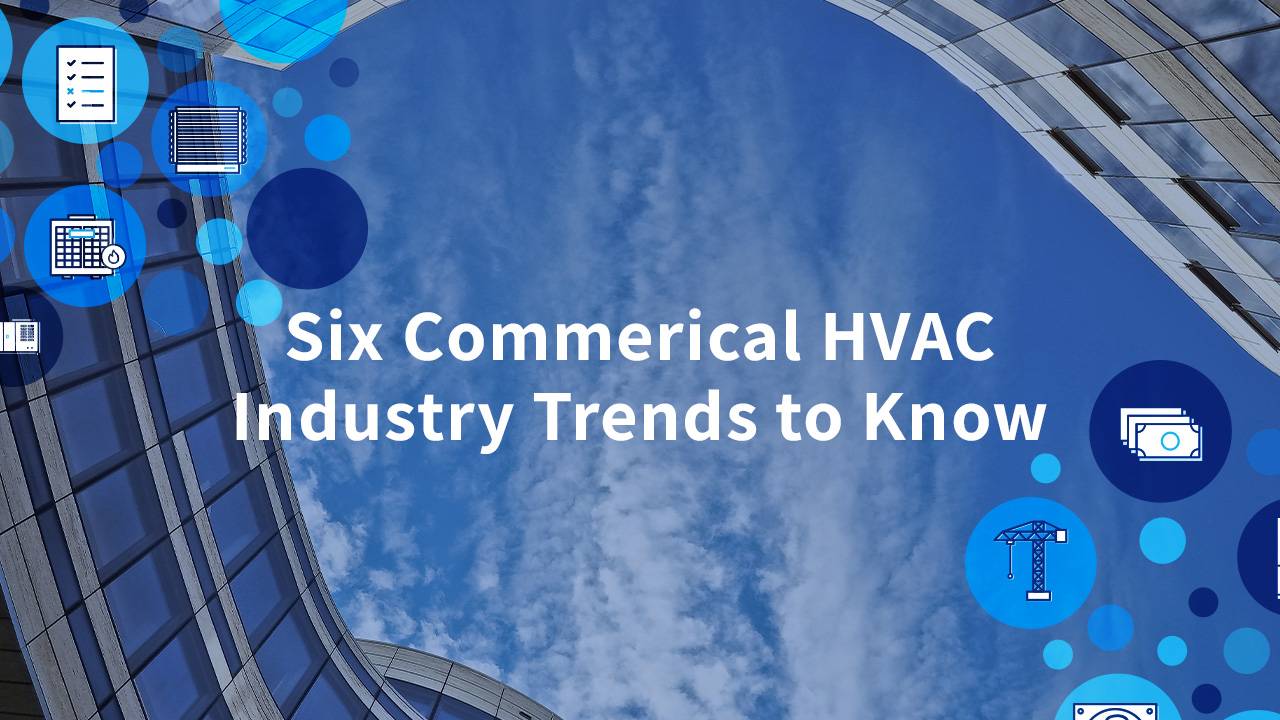It’s 2022 and technology touches every aspect of our lives, homes and businesses. It’s allowed companies to grow more flexible with software, data and the Internet of Things allowing businesses like restaurants, gas stations and factories to provide better products and services to their customers. Technology also continues to shape the HVAC industry, allowing greater control, maximum performance and better comfort in commercial properties.
Commercial HVAC operators and professional HVAC technicians alike must be aware of the latest trends impacting the industry to take advantage of the benefits and avoid the potential pitfalls. What trends are impacting the commercial HVAC industry in 2022? Whether it’s technology to boost HVAC performance or increase energy efficiency, the following trends will affect the commercial HVAC sector for years to come:
Connectivity and Data
Thanks to technology, property owners and managers can access all sorts of data to understand how their HVAC systems are running, including efficiencies, operations and potential malfunctions. Thanks to this information, generated by smart equipment and sensors, they can respond to changes and plan for the most effective heating, cooling and ventilation.
With Motili’s technology, commercial HVAC operators can take advantage of advanced insight into their system’s operations and optimize energy savings. Motili’s proprietary Asset Condition Index also predicts equipment failure before customers experience any loss of service, saving valuable time and money.
Eco-friendly HVAC
Green technology continues to be a hot trend in 2022, including in the commercial HVAC sector. Energy-efficient HVAC that is environmentally friendly not only helps the planet, but it saves plenty of money on utility bills in the process. After all, HVAC accounted for about 35% of carbon emissions from a typical building, according to 2014 data.
Motili customers gain a better understanding of their HVAC carbon emissions by employing the HVAC Efficiency Tool. The emission calculator allows users to see important statistics concerning their energy costs over 10 years, their percentage of decreased energy usage, and even the weight of carbon savings in elephants.
Smart HVAC
Smart HVAC continues to trend across the industry, including among commercial HVAC operations. With devices such as smart thermostats, property managers can control the indoor climates of their buildings remotely, saving plenty of time and effort in the process.
Plus, greater control results in conserved energy and lower utility bills, as well as improved monitoring of indoor air quality. In fact, smart HVAC systems can be monitored and controlled remotely from a smartphone or a tablet. Other trending smart HVAC devices include smart air quality monitors and smart air purifiers, which can be installed in a variety of facilities.
Ductless HVAC Systems
Installing and replacing ductwork is an expensive process, so ductless HVAC units are a growing trend in the commercial HVAC market. Previously reserved for buildings with limited load, ductless HVAC systems are now available for commercial buildings of all sizes. These compact units produce plenty of heating and cooling capacity while remaining energy efficient.
While ductless HVAC systems carry a significant expense, the cost can be a more affordable alternative to adding ductwork to many spaces. The trend is also a viable alternative to traditional HVAC for infrastructures with air leak-causing gaps.
IAQ Safety
While indoor air quality was a priority in the commercial HVAC industry for some time, the outbreak the COVID-19 pandemic brought the focus on IAQ front and center. The fight against the novel coronavirus led to a variety of developments in air quality safety in the past two years.
Popular options include purification systems employing elements like UV lights, ionization or even hydrogen peroxide to improve the IAQ of commercial buildings. These systems easily can be installed in both older and new HVAC systems to kill viruses, bacteria, fungi and molds while circulating the air inside a building.
Software Improvements
Practically every commercial HVAC need can now be conducted using user-friendly software interfaces, allowing operators to better understand their energy usage and control the climate within their properties. From remotely controlling thermostats to notifications of energy spikes, software improvements have greatly enhanced the way commercial building operators interact with their HVAC systems.
Some of the same software also allows professional HVAC contractors to remotely monitor and access the system, helping them provide predictive and preventative maintenance through a streamlined platform. Combing software improves energy efficiencies, reduces malfunctions and reduces response times.












